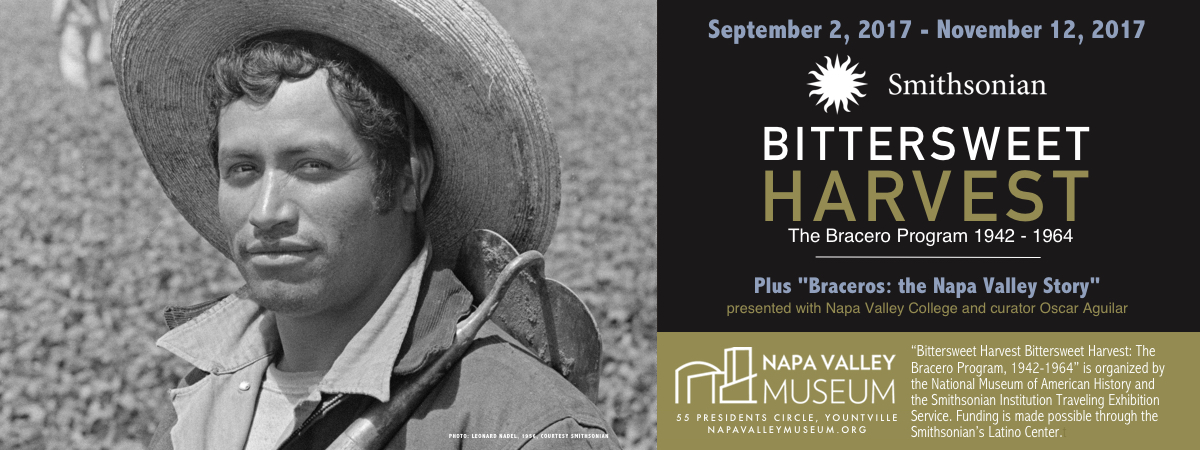The Smithsonian presents Bittersweet Harvest: The Bracero Program, 1942-1964
Cosecha amarga, cosecha dulce: el programa bracero 1942-1964

Begun in 1942 as a temporary war measure to address labor needs in agriculture and the railroads, the bracero program eventually become the largest guest worker program in U.S. history. Small farmers, large growers, and farm associations in California, Arizona, New Mexico, Texas, Arkansas, and 23 other states hired Mexican braceros to provide manpower during peak harvest and cultivation times. By the time the program was canceled in 1964, an estimated 4.6 million contracts had been awarded.
Bittersweet Harvest, a moving new bilingual exhibition organized by the Smithsonian’s National Museum of American History (NMAH) and circulated by SITES, examines the experiences of bracero workers and their families, providing rich insight into Mexican American history and historical background to today’s debates on guest worker programs. Consisting of 15 freestanding, illustrated banners, the exhibition combines recent scholarship, powerful photographs from the Smithsonian’s collection, and audio excerpts from oral histories contributed by former contract workers.
The bracero program was controversial in its time. Mexican nationals, eager for cash work, were willing to take harsh jobs at wages scorned by most Americans. Farm workers already living in the U.S. worried that braceros would compete for jobs and drive down wages. “The braceros experienced exploitation but also opportunity,” says NMAH curator Peter Liebhold. “The work was grueling, the time spent away from home difficult, but the opportunity to earn money was real. The program was truly bittersweet.”
Bittersweet Harvest: The Bracero Program 1942-1964 was developed by the Smithsonian’s National Museum of American History and circulated by the Smithsonian Institution Traveling Exhibition Service. This exhibition received Federal support from the Latino Initiatives Pool, administered by the Smithsonian Latino Center.